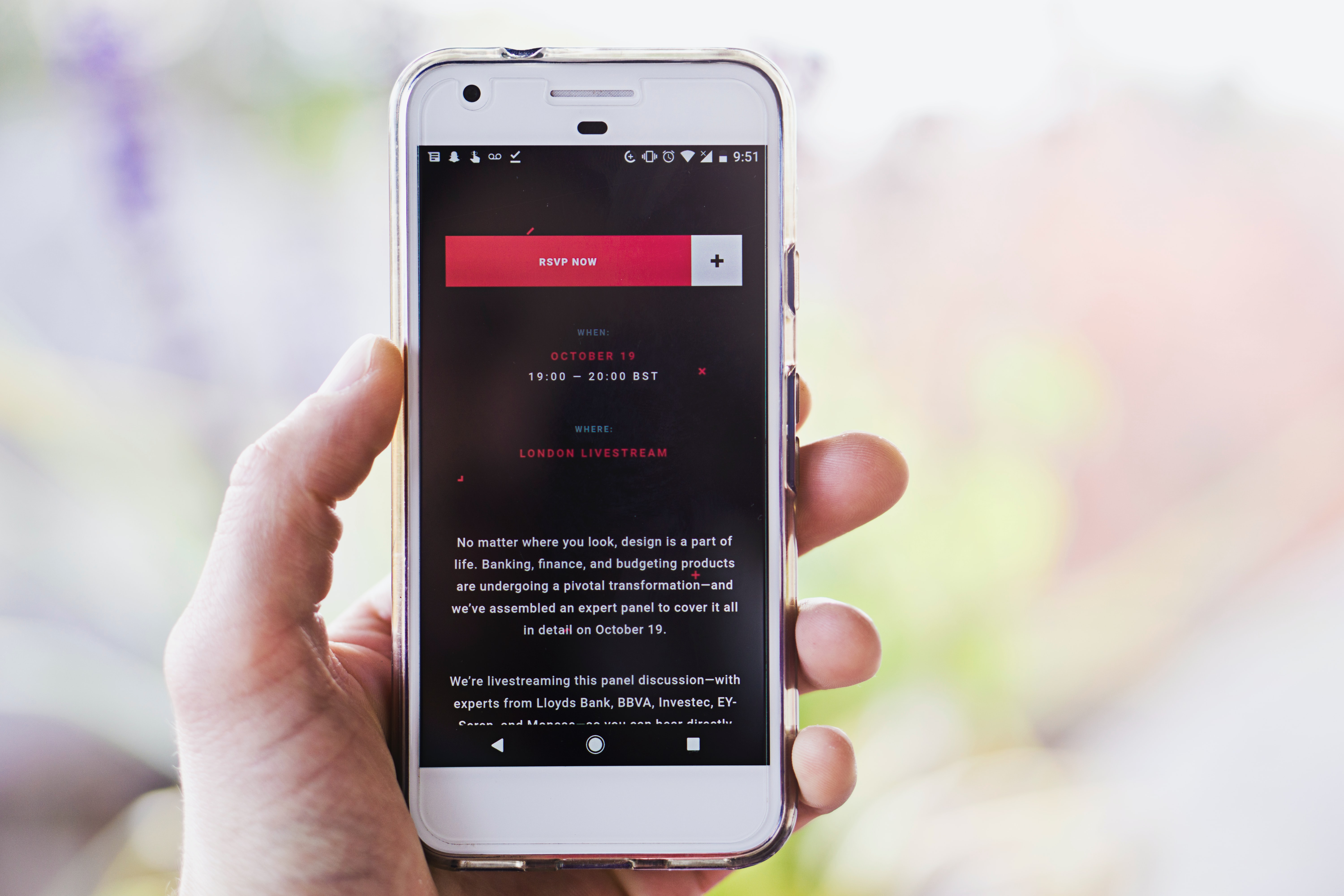Oh, Hello Branding Group
Email marketing has come a long way in the past few years. While there are many email marketing services and tools out there with fancy add-ons, features, and design aspects, plain text emails with compelling copy can perform just as well, if not better than a design-heavy email with less effective copy. Additionally, no matter how beautifully designed your emails are, if they don’t have good content and effective copy, your subscribers will stop reading them and start deleting your messages. Here are 10 tips to write compelling email newsletters.

We also have a blog post about general email marketing tips, check it out here.
Many people focus on the body of the email, but let’s not forget, the first thing people see in your email is the subject line. Let’s focus on subject line copy, then discuss body copy.
Subject Line Copy
One of the most important parts of writing effective email copy is nailing the subject line. Think of the subject line as the gatekeeper of your email, if your subject line isn’t enticing, it doesn’t really matter what the body of your email says, as no one will get to read it.
1. Use actionable language
When it comes to email subject lines, using actionable language doesn’t necessarily mean overusing verbs, but it definitely does help. For example, would you open an email that said “Treat Mom to lunch this Mother’s Day” or “Mother’s Day special”? The subject line that directly tells the reader what to do will always be more effective. Here are some other common action verbs for email subject lines:
- Take
- Download
- Reserve
- Ask
- Buy
When you use actionable language and verbs like these, the reader doesn’t have to guess or infer what you want them to do, it’s directly there in the subject line. However, there are other ways to use actionable language without relying on verbs, so you can get more creative with wording. What it really comes down to is using language that makes it easy, clear, and concise to the reader what they can do with the content of the email, if they choose to open it. When you’re writing a marketing email, always keep the user at the top of your mind. Why should they open your email? What’s in it for them? How will it provide value to them?
2. Personalize wherever possible
Emails that are highly targeted and sent to the right segment of your subscriber list will perform drastically better on metrics such as open rate and clickthrough rate, than generic sales emails. The Direct Marketing Association found that segmented and targeted emails accounted for nearly 58% of all revenue for the marketers that were surveyed. While this is a significant statistic, it isn’t really all that surprising. The more segmented your email list is, the better you’re able to personalize the subject lines and provide content that is relevant to that specific email recipient. Whenever you’re creating your subject line, ask yourself if you could make it more personal. And take it beyond just including their first name, as that is now standard practice in the world of email marketing. Let’s walk through a scenario to show just how effective subject line personalization is.
Imagine:
You are a real estate agent with an email list of 5,000 subscribers. Some of them want to rent a home from you, while others are ready to buy their forever home. They are not concentrated in one area, they are located in various cities and zip codes across the country. They all have different levels of income and are comfortable with different price points for a home. Some people on the list are looking for a quaint one bedroom apartment, while others are looking for their dream home to build their 5 person family. No matter how good your copy is, there’s no way you could effectively resonate your message with all 5,000 subscribers, they all have different needs and lifestyles that should be taken into consideration.
Your email subject line should not be the same for all 5,000 people on your list, you should have one that says, “Renovated studio available for rent in Grand Rapids” and one that says, “Open house this Saturday for two level family home in Detroit”, for example. Each of these subject lines directly targets the different people on your list and addresses the type of content that they are specifically interested in.

3. Focus on clarity rather than catchy slogans
When marketers start writing subject lines, they typically try to think of something catchy, and as a result, the messaging can sometimes be unclear. Rather than focusing on catchiness before clarity, make sure clarity is your number one priority. If your subject line is catchy, but no one really understands what the message is saying, it doesn’t really matter how catchy it is, as no direct action will come as a result of the message. When you prioritize clarity first, you can add in catchiness after you’ve drafted a clear and concise subject line. It’s not to say that you can’t make your subject lines funny, clever, or catchy, you definitely can add that in, but the first priority should always be making your message clear to the reader.
4. Make sure your subject line and body copy are aligned
If you’ve ever written a marketing email, then you know how important it is that your call-to-action copy and your landing page offer align. It’s the same theory when it comes to your email subject line and body copy. Whatever promise your subject line is making, make sure your email message delivers. It’s not only responsible, it can help tremendously in retaining your email subscribers. People don’t like to read a subject line and think they are getting one thing, only to open the email and see that the subject line was click-bait. When you don’t deliver on your promises, your click-through rate will plummet. If you consistently make big promises in your subject lines but do not deliver on them, your email open rate may be very high, but that doesn’t mean much if no one is actually clicking on the content of your email.
Email Body Copy
Now that you know the essentials of an effective email subject line, your audience will be excited to finally read the body of your email. So how do you keep them engaged and create copy that will get them to click? Here are the important components of email body copy:
1. Establish relevancy
Similar to the subject line, the body copy of the email should establish relevancy to the reader using personalization. Again, it will take much more than just inserting the reader’s first name. The beginning of the email should make why you are emailing the reader very clear to them, and explain how you know each other. For example, let’s use an example of an email from a gym, trying to retain its customers.
Subject Line: Uh oh, your membership is expiring!
Body: Hello from Fitness Gym! Hope you’re doing well. We’re writing because it looks like your membership will expire on 07/13/2021, which is coming up pretty quickly. If you’ve enjoyed your time using Fitness Gym so far, it might be convenient to renew your membership before the next billing cycle. We’d be happy to help you renew your membership and answer any questions you may have!
Right off the bat, the email explains why the business is reaching out to the recipient, and that this email is to help them renew their membership before the next billing cycle. If that sentence was taken out and instead started with the phrase “Sign up just in time for summer! Click the button below to sign up for a membership with Fitness Gym.”, the email would be quite off-putting to the recipient, because they have no idea why Fitness Gym is emailing them to buy a gym membership, and they might not even know how Fitness Gym got their information. Consumers sometimes forget that they’ve signed up for something or given their contact information to a business, so it’s important to jog their memory of your reason for contacting them.

2. Always write in the second person
Writing in the second person means using pronouns like “you, your and yours.” Writing in the second person orients the copy towards the reader, rather than focusing on the business’ perspective. It’s always better to focus on the customer, not the brand when possible. It’s a subtle tactic to help keep customers top of mind when you’re writing your marketing emails. Let’s use Fitness Gym again as an example. Rather than sending out a promotion email with the language, “We have a 30% sale going on through the month of March and we encourage you to take this deal while you still can”, write the same thing, in the second person, “Don’t miss your chance to get 30% off your gym membership through the month of March, you definitely don't want to leave this deal on the table!”. See how much more customer focused the second example is?
3. Talk about benefits, not features
Related to keeping your customer at the focus of your emails, you should also strive to talk about the benefits of your products or services, not the features. As the marketer affiliated with the company, you already know the value that your email is providing, but your recipient doesn’t. You need to explicitly explain it to them in a way that is concise and easy to understand. Many marketing emails only focus on the features of a product or service, not the benefits that the recipient would experience. A common example of this is promotion emails, you’ve probably received quite a few emails that immediately throw a discount in your face, but don’t explain the value behind the discount. What does 30% off a new couch do for your customer’s goals? Other than the monetary benefit, what other benefits will a new couch provide? Some examples could be comfort in the home, a modern looking living room, ambiance, etc. But your customer isn’t going to make that connection if all they see is 30% off. If you’ve ever sent a marketing email offering a hefty discount only to see minimal sales as a result, take a look at your email copy. Did you only describe the discount, or did you use descriptive language to explicitly explain the benefits of your product to the consumer?
4. Keep it concise
Many email copywriters try to shove the company’s entire backstory into a marketing email, which is a huge turnoff to consumers. Even when a marketing email is fully opened, read, and clicked by a consumer, they’re skimming it rather than reading it. Most consumers just read the subject line, scan the main points of the email, and decide whether they want to take any action based on the email. So if your email has hundreds of words in it, you’re making it much more difficult for the recipients to quickly scan and decide if they want to take an action. Instead, find a way to summarize what the reader will get in a concise, compelling way, then drive traffic to a landing page or sales page through a call-to-action button, where they can read your long form copy there.
5. Keep your copy light-hearted
Marketing emails are a great opportunity for your brand to showcase its personality, and help build a relationship with your email subscribers. Keeping your copy light-hearted and fun through this line of communication is a great way to build and maintain that relationship. Many brands humanize themselves and create their own persona through email marketing, using language that isn’t that different than what you’d say to a friend. For example, again using the Fitness Gym example, let’s imagine they are sending an email to a person who has opted not to renew their membership. They could send an email saying, “We hate to see you go! You can always resume your membership with one of our representatives by clicking the button below.” which is what a typical company would sound like for this type of situation. Or, they could humanize their company and get the same message across with more light-hearted copy such as, “Miss you already! If you ever change your mind and want to see us again, give us a call at 123-456-7891.” See the difference? Notice the use of the second person in the second example, as well as the general tone of the copy, as it’s closer to the way you would talk to a real person rather than an entity.
6. Use actionable language in your call-to-action
Every good marketing email needs a call-to-action. It should be very easy to identify and accessible. Remember, people aren’t reading every word of your email, they’re quickly scanning it, so you want your call-to-action to pop out when they are skimming. You can make your call-to-action stand out by making the color pop, ideally using your brand colors, to make it stand out from the rest of the email. You should also be using succinct, actionable language in your call-to-action. Rather than just using “Click here” on your CTAs, switch it up every now and then. If you’re offering a free ebook, use “Get your free ebook”, if you’re offering a free consultation, use “Book your free consultation”, so your reader knows exactly what they are getting when they click.
Email marketing is one of the oldest and most reliable marketing channels, but marketers still need to take the time to learn today’s best practices to get the best results out of their marketing emails.
Want more marketing tips like these?





Submit a Comment